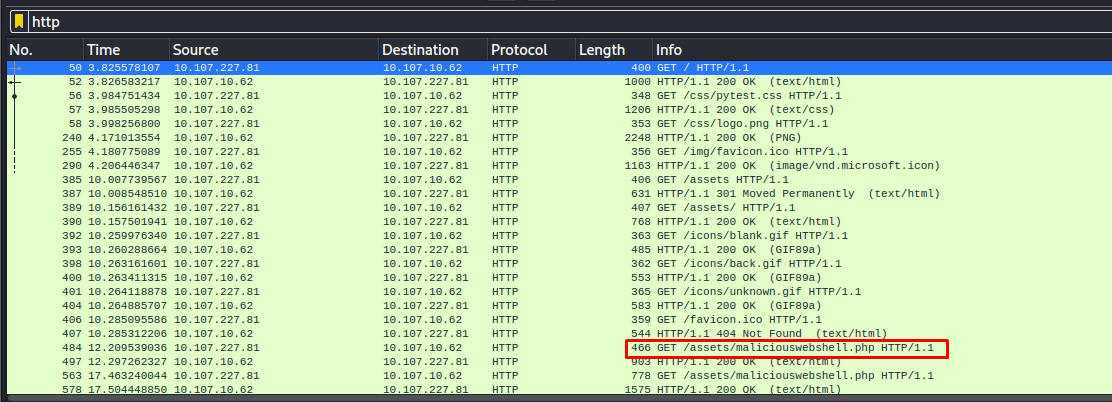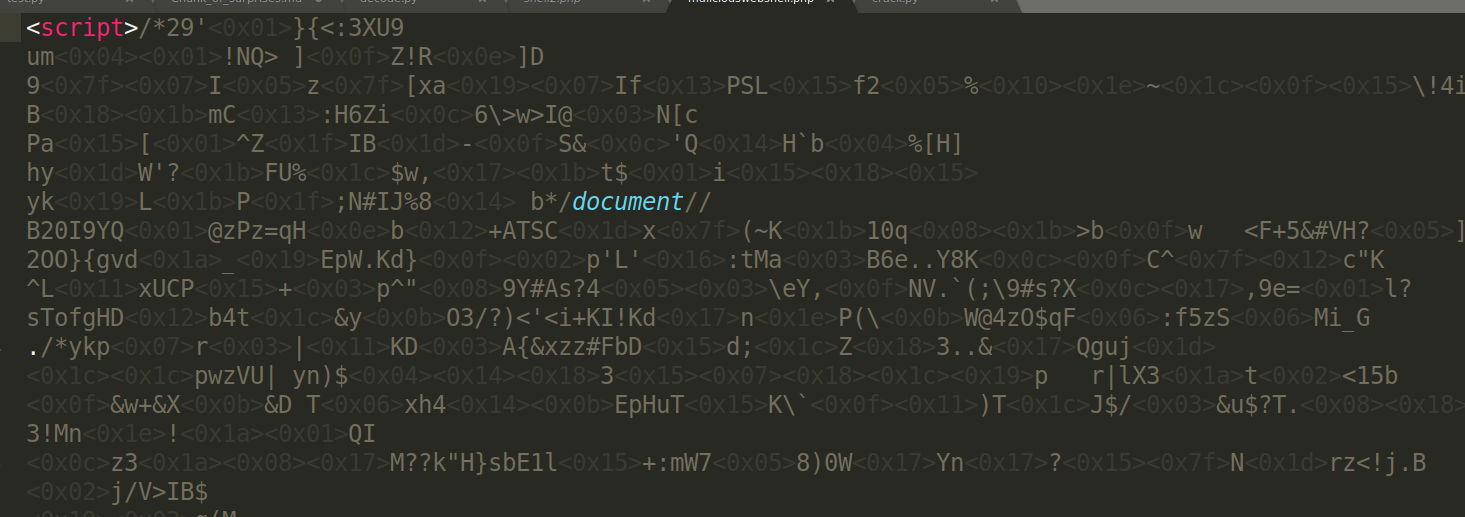Pas_Trop_Dur
In this chall, we are given a Wireshark communication and the goal is to find the password used by the hacker on its malicious file.
When we filter the HTTP packet we can see a “maliciouswebshell.php”.

When we try to download it, we get a lot of unprintable characters: 
We see a lot of strings that look like base64, but… aren’t the == supposed to be at the end ?

Using the basic regex "[=0-9a-zA-Z]+" on your favourite code editor you can recover all the base64 strings. This regex means that I am looking for every string that is between quotes and that contain at least one character that should be a letter (upper or lower case), a number or an equal sign (the “+” means “at least once”).
You can save the result in a file and remove every quote. Then you can use the linux command cat yourfile | rev | base64 -d > maliciouswebshell.php. This will save the web page source code in the “maliciouswebshell.php”. We first need to reverse the string (rev command) because the we noticed that the == was at the beginning but in base64 they should be at the end.
You can find the file here. Now that we have the code we need to understand it.
We can host it locally with the php command
php -S localhost:8080
The form sends itself (onsubmit="return login(this)") to the login function. We now check this function. This function directly call the addEncKey function. The code of the function is the following:
1
2
3
4
5
6
7
8
9
function addEncKey(form){
var encKey = document.createElement("input");
encKey.type = "hidden";
pref = ENCKEY.substr(0, PRELEN);
encKey.name = pref.split("").reverse().join("") + pref;
encKey.value = btoa(ENCKEY);
form.appendChild(encKey);
return form;
}
What we need to understand is that it gives the field name pref and its reverse. So encKey.name is just a palindrome and the encKey.value is a base64 of ENCKEY which was at first base64 decoded, so we have in it the initial value that you can find at the top of the file.
After that, the login function calls the setValue and setName. We are just going to look at the value because it is what we are inputting.
1
2
3
function setValue(str){
return btoa(xorStr(str));
}
So this is not a big function and it only xor the string and base64 encode it. There is a getValue function in the file so we don’t need to reinventing the wheel. Now is we try to intercept the request with burp, wen we send the string a we have the result Lg==.

So we know that we can reverse this value with the getValue function. To do that, we can use the console of our browser (press F12 > Console).

Now that we know how to reverse a given string we need to find the password the hacker used. Getting back to Wireshark, when we inspect the TCP of the penultimate maliciouswebshell.php we can find the cookies like before. The first one of these packets is not the good one but the second one gives us the password:


The flag was HACKDAY{Wabbajack12345678}.